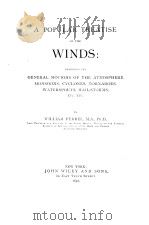《A Treatise on The Higher Plane Curves:Intended As A Sequel To A Treatise on Conic Sections Second Ed》
| 作者 | George Salmon 编者 |
|---|---|
| 出版 | 未查询到或未知 |
| 参考页数 | 379 |
| 出版时间 | 没有确切时间的资料 目录预览 |
| ISBN号 | 无 — 求助条款 |
| PDF编号 | 819751588(仅供预览,未存储实际文件) |
| 求助格式 | 扫描PDF(若分多册发行,每次仅能受理1册) |
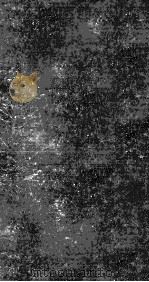
CHAPTER Ⅰ.COORDINATES1
Descriptive and metrical theorems1
General definition of trilinear coordinates2
Relation between point(1,1,1)and line x+y+z=04
Particular cases of trilinear coordinates5
circular coordinates6
LINE COORDINATES7
Their relation to trilinear coordinates8
Particular cases of line-coordinates9
Geometrical duality9
CHAPTER Ⅱ.GENERAL PROPERTIES OF ALGEBRAIC CURVES11
SECTION Ⅰ.NUMBER OF TERMS IN THE EQUATION11
All forms which are general must have as many independent constants as the general equation11
Number of terms in the general equation13
Number of points which determine a n-ic13
A single curve determined by these conditions14
In what cases this number of points fails to determine a n-ic15
If one less than this number of points be given,the curve passes through other fixed points16
If of intersections of two n-ic-s,np lie on a p-ic,the remainder lie on a(n-p)-ic16
Extension of Pascal's theorem17
Steiner's and Kirkman's theorems on the hexagon17
Theorems concerning the intersections of two curves18
SECTION Ⅱ.MULTIPLE POINTS AND TANGENTS20
Equation of tangent at origin21
The origin,a double point22
Three kinds of double points22
Their relation illustrated24
Triple points.their species25
Number of nodes equivalent to a multiple point26
Multiple point equivalent to how many conditions27
Limit to number of nodes on a proper curve27
Deficiency of a curve28
Fundamental property of unicursal curves29
Consideration of the case where the axis is a multiple tangent30
Stationary tangents and inflexions32
Two consecutive tangents coincide at a stationary tangent32
Correspondence of reciprocal singularities32
Curve crosses the tangent at an inflexion33
Measure of inclination of curve to the axis34
Points of undulation35
Examples36
Relation between points where tangents meet the curve again37
Equation of asymptotes,how formed38
SECTION Ⅲ.TRACING OF CURVES40
Newton's process for determining form of curve at a singular point44
Keratoid and ramphoid cusps46
SECTION Ⅳ.POLES AND POLARS47
Joachimsthal's method of determining points where a line meets a curve47
Polar Curves49
of origin49
Every right line has(n-1)2 poles49
Multiple points and cusps,how related to polar curves50
SECTION Ⅴ.GENERAL THEORY OF MULTIPLE POINTS AND TANGENTS50
All polars of point on curve touch at that point51
Points of contact of tangents from a point how determined51
Degree of reciprocal of a curve52
Effect of singularities on degree of reciprocal53
Discriminant of a curve54
If the first polar of A has a double point B,polar conic of B has a double point A54
Hessian and Steinerian defined54
Conditions for a cusp56
Number of points of inflexion57
how affected by multiple points58
Equation of system of tangents from a point59
Application to the case of a cubic60
Number of tangents from a multiple point61
SECTION Ⅵ.RECIPROCAL CURVES61
What singularities to be counted ordinary62
Plücker's equations63
Number of conditions,the same for curve and its reciprocal64
Deficiency,the same for both64
Cayley's modification of Plücker's equations64
CHAPTER Ⅲ.ENVELOPES65
Two forms in which problem of envelopes presents itself65
Envelope of curve whose equation contains a single parameter66
Envelope of a cos2θ+b sin2θ=c67
Equation of parallel to a conic68
Envelope of right line containing asingle parameter algebraically:its characteristics68
Envelope of curve with related parameters69
Method of indeterminate multipliers70
Envelope of curve whose equation contains independent parameters71
RECIPROCAL CURVES72
Method of finding equation of reciprocal73
Reciprocal of a cubic74
Symbolical form of equation of reciprocal74
Reciprocal of a quartic75
Equation of system of tangents from a point75
Equation of reciprocal in polar coordinates76
CONDITION OE CONTACT[tact-invariant]of two curves76
Its order in the coefficients of each curve77
EVOLUTES79
Defined as envelope of normals79
Coordinates of centre of curvature81
General expression for radius of curvature83
Length of are of evolute84
Radius of curvature in polar coordinates84
Evolutes of curves given by tangential equation86
Quasi-normals and quasi-evolutes86
Quasi-evolute of conic87
General form of equation of quasi-normal88
Quasi-evolute when the absolute is a conic89
Normal of a point at infinity90
Characteristics of evolute90
Deficiency of evolute93
Condition that four consecutive points on a curve should be concircular93
[The condition of Art.114 is immediately obtained by equating to nothing the differential of the value of the radius of curvature(Art.102)subject to the condition Ldx+Mdy=0.]93
CAUSTICS95
Caustic by reflection of a circle95
Quetelet's method95
Pedal of a curve96
Caustic by refraction of right line and circle97
Evolute of Cartesian98
PARALLEL OURVES AND NEGATIVE PEDALS98
Cayley's formul? for characteristics of parallel curves99
Problem of negative pedals102
Roberts's method102
Method of inversion103
Characteristics of inverse curve and of pedal103
Caustic by reflexion of parabola104
Negative Pedal of central and focal ellipse104
CHAPTER Ⅳ.METRICAL PROPERTIES105
Newton's theorem of constant ratio of rectangles105
Carnot's theorem of transversals106
Three inflexions of cubics lie on a right line107
Two kinds of bitangents of quartic108
DIAMETERS109
Newton's generalization of notion of diameters109
Theorem concerning intercept made between curves and asymptotes110
Curvilinear diameters110
Centres112
POLES AND POLARS112
Cotes's theorem of harmonic means of radii112
Polar curves113
Polars of points at infinity113
Pole of line at infinity114
Mac Laurin's extension of Newton's theorem114
FOCI115
Pole of line at infinity with respect to curve of nth class116
Its metrical property:centre of mean distances of contacts of parallel tangents116
General definition of foci117
Number of foci possessed by a curve118
Antipoints119
Coordinates of foci how found119
Locus of a point the tangents from which make with a fixed line angles whose sum is constant120
Every focus of a curye is a focus of its evolute121
Theorems concerning focal perpendiculars on tangents121
concerning focal distances of point on curve122
concerning angles between focal radii and tangent123
Locus of double focus of circular curve determined by N-3 points124
Locus of focus of curve of nth class determined by N-1 tangents124
Miquel's theorem as to foci of parabolas touching 4 of 5 given lines125
CHAPTER Ⅴ.CUBICS126
General division of cubics126
SECTION Ⅰ.INTERSECTION OF A CUBIC WITH OTHER OURVES127
Tangential of a point and satellite of a line defined127
Asymptotes meet curve in 3 collinear finite points128
Three points of inflextion lie on a right line128
Four points of contact of tangents from any point on curve,how related129
Maclaurin's theory of correspondence of points on a cubic130
Coresidual of four points on a cubic131
To draw a conic having four-point contact and elsewhere touching a cubic132
Conic of 5-point contact,how constructed132
Sextactic points on cubic,how found132
Sylvester's theory of residuation133
Two coresidual points must coincide134
Two systems coresidual to the same are coresidual to each other135
Analogues in theory of cubics to anharmonic theorems of conics137
Locus of common vertex of two triangles whose bases are given and vertical angles eqnal,or having a given difference139
SECTION Ⅱ.POLES AND POLARS139
Construction for polar of a point with respect to a triangle140
Construction by the ruler for polar of a point with respect to a cubic140
Anharmonic ratio constant of pencil of four tangents from any point on a cubic141
Two classes of non-singular cubics142
Sixteen foci of a circular cubic lie on four circles142
Chords through a point on cubic cut harmonically by polar conic143
Harmonic polar of point of inflexion143
All cubics through nine points of inflexion have these for inflexions145
Correspondence of two points on Hessian146
Steinerian of a cubic identical with its Hessian147
Cayleyan,different definitions of148
Polar line with respect to cubic of point on Hessian touches Hessian149
Common tangents of cubic and Hessian149
Stationary tangents touch the Hessian149
Tangents to Hessian at corresponding points meet on Hessian150
Three cubics have common Hessian150
Rule for finding point of contact of any tangent to Cayleyan151
Points of contact of stationary tangents with Cayleyan152
Coordinates of tangential of Point on cubic,how found153
Polar conic of line with respect to cubic153
How related to triangle formed by tangents where line meets cubic154
Double points,how situated with regard to polar conics of lines154
Polar conic of line infinity155
Another method of obtaining tangential equation of cubic155
Polar conic of a line when reduces to a point155
Points,whose polar with respect to two cubics are the same156
Critic centres of system of cubics157
Locus of nodes of nodal cubics through seven points157
Plücker's classification of cubics158
SECTION Ⅲ.CLASSIFICATION OF CUBICS159
Every cubic may be projected into one of five divergent parabolas and into one of five central cubics161
Classification of cubic cones162
No real tangents can be drawn from oval164
Unipartite and bipartite cubics165
Species of cubics166
Newton's method of reducing the general equation174
Plücker's groups175
SECTION Ⅳ.UNICURSAL CUBICS176
Inscription of polygons in unicursal cubics178
Cissoid,its properties179
Acnodal cubic has real inflexions,crunodal imaginaty181
Construction for acnode given three inflexional tangents181
SECTION Ⅴ.INVARIANTS AND COVARIANTS OF CUBICS182
Canonical form of cubic182
Notation for general equation182
General equation of Hessian and of Cayleyan183
Invariant S,and its symbolical form184
Invariant T185
General equation of reciprocal186
Calculation of invariants by the differential equation187
Discriminant expressed in terms of fundamental invariants189
Hessian of λU+μH189
Condition that general equation should represent three right lines190
Reduction of general equation to canonical form191
Expression of discriminant in terms of fundamental invariants192
Of anharmonic ratio of four tangents from any point on curve192
Covariant cubics expressed in form λU+μH193
Sextic covariants194
The skew covariant195
Equation of nine inflexional tangents196
Equation of Cayleyan in point coordinates196
Identical equation in theory of cubics198
Conic through five consecutive points on cubic200
Equation expressed in four line coordinates202
Condition that cubic should represent conic and line202
Discriminant of cubic expressed as determinant203
Hessian of PU and of UV204
CHAPTER Ⅵ.QUARTICS206
Genera of quartics206
Special forms of quartics207
Illustration of the different forms208
Distinction of real and imaginary210
Flecnodes and biflecnodes210
Quartic may have four real points of undulation211
Quartics may be quadripartite212
Inflexions of quartics,how many real213
Classification of quartics in respect of their infinite branches213
THE BITANGENTS214
Discussion of equation UW=V2215
There are 315 conics passing through eight contacts of bitangents218
Scheme of these conics221
Hesse's algorithm for the bitangents221
Geiser's method of connecting bitangents with solid geometry222
Cayley's rule of bifid substitution223
Bitangents whose contacts lie on a cubic225
Aronhold's discussion of the bitangents225
From 7 bitangents the rest can be found by linear constructions227
Aronhold's algebraic investigation229
BINODAL AND BICIRCULAR QUARTICS231
Tangents from nodes of a binodal are homographic232
Foci of bicircular quartic lie on four circles233
Casey's generation of bicircular quartics234
Two classes of bicircular quartics236
Relations connecting focal distances of point on bicircular237
Confocal bicirculars cut at right angles288
Hart's investigation240
Cartesians241
The limacon and the cardioide242
Focal properties obtained by inversion242
Inscription of polygons in binodal quartics243
UNICURSAL QUARTICS244
Correspondence between conics and trinodal quartics245
Tangents at or from nodes touch the same conic247
Tacnodal and oscnodal quartics249
Triple points250
INVARIANTS AND COVARIANTS OF QUARTICS251
General quartic cannot be reduced to sum of five fourth powers252
Covariant quartics256
Examination of special case257
Covariant conics261
CHAPTER Ⅶ.TRANSCENDENTAL CURVES263
The cycloid263
Geometric investigation of its properties264
Epi-cycloids and epi-trochoids266
Their evolutes are similar curves269
Examples of special cases270
Limacon generated as epi-cycloid270
Steiner's envelope271
Reciprocal of epicycloid271
Radius of curvature of roulettes272
Trigonometric curves273
Logarithmic curves274
Catenary275
Tractrix and syntractrix277
Gurves of pursuit278
Involute of circle278
Spirals279
CHAPTER Ⅷ.TRANSFORMATION OF CURVES282
LINEAR TRANSFORMATION283
Anharmonic ratio unaltered by linear transformation284
Three points unaltered by linear transformation285
Projective transformation286
Homographic transformation may be reduced to projection287
INTERCHANGE OF LINE AND POINT COORDINATES289
Metbod of skew reciprocals291
Skew reciprocals reduceable to ordinary reciprocals294
QUADRIC TRANSFORMATIONS296
Inversion,a case of quadric transformation298
Applications of method of inversion300
RATIONAL TRANSFORMATION301
Roberts's transformation301
Cremona's rational transformation304
If three curves have common point their Jacobian passes through it307
Deficiency unaltered by Cremona transformation309
Every Cremona transformation may be reduced to a succession of quadric transformations310
TRANSFORMATION OF A GIVEN CURVE312
Rational transformation between two curves312
Deficiency unaltered by rational transformation314
Transformation,so that the order of the transformed curve may be as low as possible316
Expression of coordinates by means of elliptic functions when D=1317
and by means of hyper-elliptic functions when D=2318
Theorem of constant deficiency derived from theory of elimination319
CORRESPONDENCE OF POINTS ON A CURVE319
Collinear correspondence of points319
Correspondence on a unicursal curve320
Number of united points321
Correspondence on curves in general322
Inscription of polygons in conics325
in cubits326
CHAPTER Ⅸ.GENERAL THEORY OF CURVES328
Cayley's method of solving the general problem of bitangents329
Order of bitangential curve330
Hesse's reduction of bitangential equation332
Bitangential of a quartic337
Formation of equation of tangential curve340
Application to quartic344
POLES AND POLARS345
Jacobian properties of345
Steiner's theorems on systems of curves348
Tact-invariants349
Discriminant of discriminant of λu+μv,and of λu+μv+νw349
Condition for point of undulation350
For coincidence of double and stationary tangent350
Steinerian of a curve351
Its characteristics352
The Cayleyan or Steiner-Hessian352
Its characteristics353
Generalization of the theory353
OSCULATING CONICS356
Aberrancy of curvature356
Investigation of conic of 5-point contact358
Determination of number of sextactic points360
SYSTEMS OF CURVES360
Chasles'method361
Characteristics of systems of conics362
Number of conics which touch five given curves363
Zeutheu's method365
Degenerate curves365
Cayley's table of results368
Number of conics satisfying five conditions of contact with other curves370
Professor Cayley's note on degenerate forms of curves371
《A Treatise on The Higher Plane Curves:Intended As A Sequel To A Treatise on Conic Sections Second Ed》由于是年代较久的资料都绝版了,几乎不可能购买到实物。如果大家为了学习确实需要,可向博主求助其电子版PDF文件。对合法合规的求助,我会当即受理并将下载地址发送给你。
高度相关资料
-

- A GEOMETRICAL TREATISE ON CONIC SECTIONS
- 1919 MACMILLAN AND CO. LIMITED
-

- A Treatise on The Higher Plane Curves:Intended As A Sequel To A Treatise on Conic Sections Second Ed
-
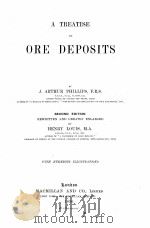
- A TREATISE ON ORE DEPOSITS SECOND EDITION
- 1896 MACMILLAN AND CO. LIMITED
-

- A TREATISE ON ELEMENTARY GEOMETRY
- 1887 J.B. LIPPINCOTT COMPANY
-
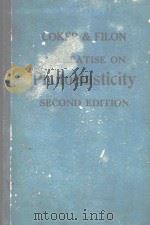
- A TREATISE ON PHOTO-ELASTICITY
- 1957 CAMBRIDGE
-
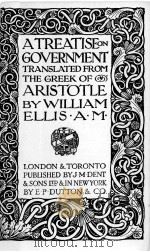
- A TREATISE ON GOVERNMENT
- 1923 J.M.DENT & SONS LTD
-
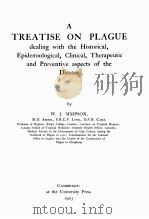
- A TREATISE ON PLAGUE
- 1905 AT THE UNIVERSITY PRESS
-
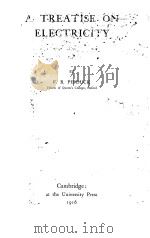
- A TREATISE ON ELECTRICITY
- 1916 AT THE UNIVERSITY PRESS
-

- A TREATISE ON SPHERICAL ASTRONOMY
- 1923 AT THE UNIVERSITY PRESS
-

- A TREATISE ON THE INTEGRAL CALCULUS
- 1954 CHELSEA PUBLISHING COMPANY
-

- A TREATISE ON THE DIFFERENTIAL GEOMETRY OF CURVES AND SURFACES
- 1909 GINN AND COMPANY
-
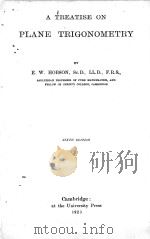
- A TREATISE ON PLANE TRIGONOMETRY SIXTH EDITION
- 1925 AT THE UNIVERSITY PRESS
提示:百度云已更名为百度网盘(百度盘),天翼云盘、微盘下载地址……暂未提供。➥ PDF文字可复制化或转WORD


